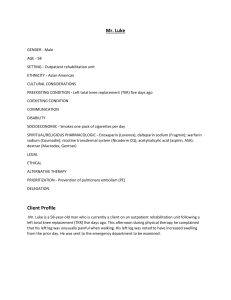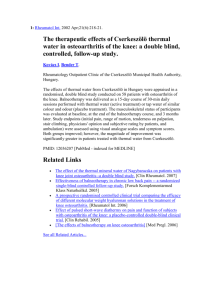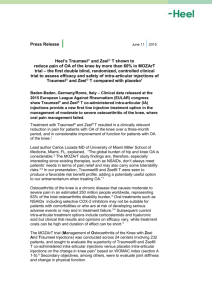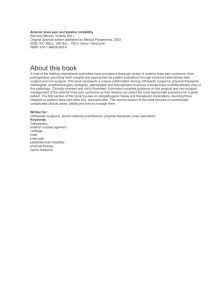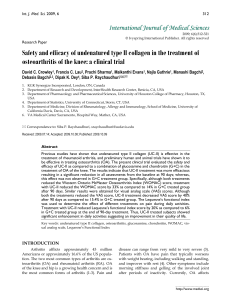Comparing the Functional Impact of Knee Replacements in Two
advertisement
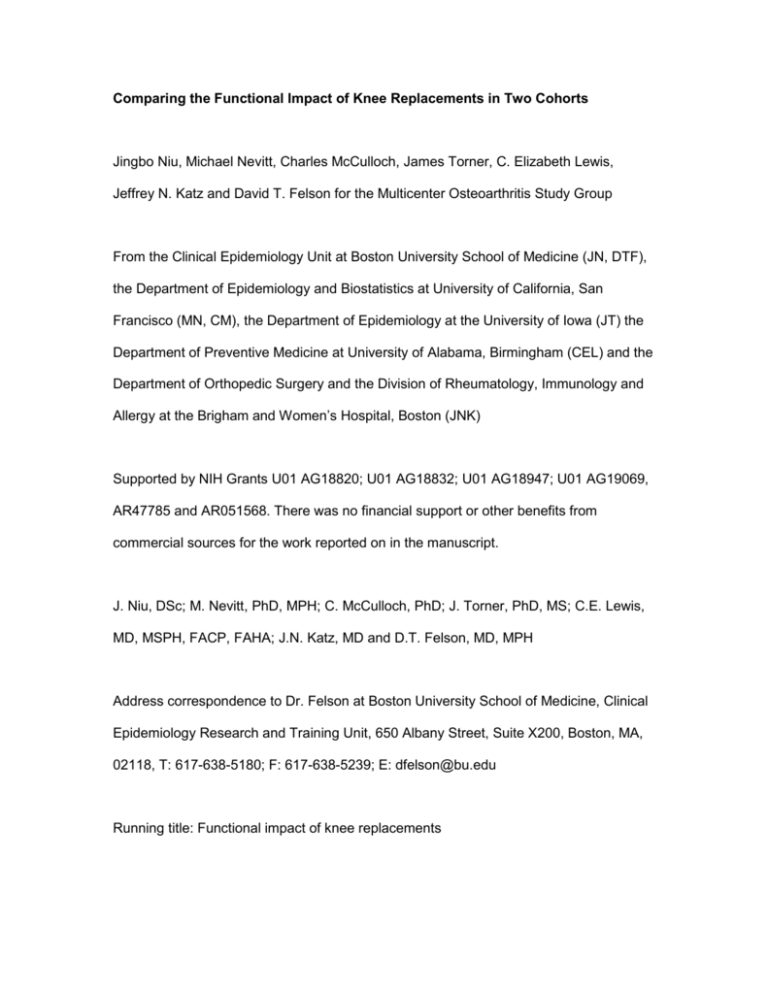
Comparing the Functional Impact of Knee Replacements in Two Cohorts Jingbo Niu, Michael Nevitt, Charles McCulloch, James Torner, C. Elizabeth Lewis, Jeffrey N. Katz and David T. Felson for the Multicenter Osteoarthritis Study Group From the Clinical Epidemiology Unit at Boston University School of Medicine (JN, DTF), the Department of Epidemiology and Biostatistics at University of California, San Francisco (MN, CM), the Department of Epidemiology at the University of Iowa (JT) the Department of Preventive Medicine at University of Alabama, Birmingham (CEL) and the Department of Orthopedic Surgery and the Division of Rheumatology, Immunology and Allergy at the Brigham and Women’s Hospital, Boston (JNK) Supported by NIH Grants U01 AG18820; U01 AG18832; U01 AG18947; U01 AG19069, AR47785 and AR051568. There was no financial support or other benefits from commercial sources for the work reported on in the manuscript. J. Niu, DSc; M. Nevitt, PhD, MPH; C. McCulloch, PhD; J. Torner, PhD, MS; C.E. Lewis, MD, MSPH, FACP, FAHA; J.N. Katz, MD and D.T. Felson, MD, MPH Address correspondence to Dr. Felson at Boston University School of Medicine, Clinical Epidemiology Research and Training Unit, 650 Albany Street, Suite X200, Boston, MA, 02118, T: 617-638-5180; F: 617-638-5239; E: dfelson@bu.edu Running title: Functional impact of knee replacements ABSTRACT Objective: To examine if different rates of total knee replacement (TKR) in two similar cohorts with symptomatic knee osteoarthritis (OA) were associated with different functional impact of disease. Design: Subjects from the Multicenter Osteoarthritis Study (MOST) and the Osteoarthritis Initiative (OAI), persons with or at high risk of OA, had knee radiographs, completed WOMAC surveys and had TKRs confirmed at each visit. At each visit, subjects were defined as having symptomatic OA (SxOA) if > knee had pain and radiographic OA or if they had a TKR. WOMAC function scores at each visit were compared by analysis of covariance adjusting for age, sex, body mass index, race, site, depression, comorbidity, painful leg joints and knees affected. Post-TKR function scores were imputed to estimate scores that would have been present without TKR. Results: Subjects with SxOA (n > 750 in MOST and in OAI) had a mean age 66 to 67 years; most were women and were White. Subjects were followed 4-5 years. Among those with SxOA, more TKRs were done in MOST (35%) than OAI (19%). Adjusted mean Western Ontario McMaster Osteoarthritis Index (WOMAC) function (0-68, 68=worst) improved from 26.9 to 21.9 in MOST and from 24.5 to 22.0 in OAI (difference between MOST and OAI in change in WOMAC function, p = .01). Estimates of function without TKRs showed function would not have changed in MOST (23.2 at baseline to 22.4). Conclusions: Functional status of subjects with knee OA in MOST improved more than in OAI, probably because of higher rates of TKRs. The decline suggests that TKR diminishes the functional impact of OA in the community. Keywords: total knee replacement, function, epidemiology Running Headline: Functional impact of TKR in knee OA

